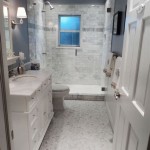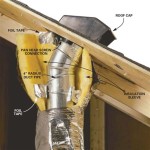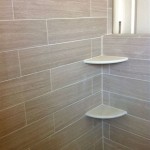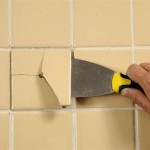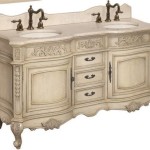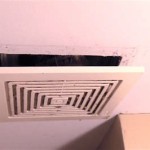Mirror Height Over Bathroom Sink
Determining the ideal mirror height over a bathroom sink requires consideration of several factors, including user height, sink height, and the overall bathroom design. A properly positioned mirror provides both functionality and aesthetic appeal, contributing to a comfortable and efficient bathroom experience.
The primary function of a bathroom mirror is to provide a clear reflection for grooming tasks. Therefore, the center of the mirror should be at eye level for the average user. However, "average" can be subjective and dependent on the individuals using the bathroom. In households with varying heights, a compromise may be necessary. One approach involves positioning the mirror slightly higher than the average eye level of the household members to accommodate taller individuals, as shorter individuals can easily stand on a small stool if needed.
The sink height plays a crucial role in determining the appropriate mirror placement. Standard sink heights typically range from 30 to 36 inches. With a standard sink height, the bottom edge of the mirror should be several inches above the backsplash or countertop, preventing water splashes and toothpaste splatters from marring the mirror's surface. This also creates a visual separation between the sink and the mirror, enhancing the overall aesthetic.
Building codes and regulations, while not universally standardized for mirror height, often offer guidelines regarding accessibility. These guidelines typically focus on ensuring usability for individuals with disabilities, including those using wheelchairs. Compliance with local building codes is essential, and consulting these codes during bathroom renovation or construction ensures inclusivity and adherence to regulations.
The overall bathroom design, including lighting and wall space, influences mirror placement. Adequate lighting is essential for grooming tasks, and the mirror's position should optimize the available light sources. Natural light from windows should be considered, as well as artificial lighting fixtures. The mirror should be positioned to avoid casting shadows on the user's face. Additionally, the size and shape of the mirror should be proportional to the wall space and the size of the vanity, creating a balanced and harmonious design.
Consider the size and shape of the mirror itself. Larger mirrors create a sense of spaciousness and can be particularly beneficial in smaller bathrooms. Horizontal mirrors tend to widen the visual space, while vertical mirrors emphasize height. The mirror's shape should complement the overall design aesthetic of the bathroom, whether it's a classic rectangular mirror, a round mirror, or a more ornate design.
Beyond standard rectangular mirrors, exploring various shapes and styles can enhance the bathroom's visual appeal. Oval, round, and arched mirrors can add a touch of elegance and soften the lines of a bathroom. Framed mirrors, with frames in various materials like wood, metal, or mosaic, can further enhance the decorative element and tie in with other design features. However, ensure that the chosen shape and style do not compromise functionality and still allow for a clear and comfortable reflection for grooming.
When installing a mirror, accurate measurements are essential. Using a tape measure, determine the eye level of each household member and calculate the average. Measure the height of the sink and backsplash to ensure adequate clearance between the sink and the bottom edge of the mirror. Mark the desired position on the wall carefully before commencing installation. For heavier mirrors, appropriate wall anchors and mounting hardware are crucial to ensure secure and stable placement.
In bathrooms with multiple sinks, the mirror arrangement requires additional planning. Individual mirrors above each sink offer personalized grooming spaces and can be customized to individual user heights. Alternatively, a single large mirror spanning the entire vanity can create a unified and spacious look. The choice depends on the bathroom's layout, the size of the vanity, and personal preference.
Medicine cabinets offer integrated storage solutions while also serving as a mirror. When incorporating a medicine cabinet, consider its depth and ensure that it does not protrude excessively into the bathroom space. The mirror surface of the medicine cabinet should follow the same height guidelines as a standard mirror, with the center positioned at the average user's eye level.
The choice of mirror and its placement significantly impact the overall functionality and aesthetic of a bathroom. Careful consideration of user height, sink height, building codes, and design elements ensures a practical and visually appealing bathroom space. Accurate measurements and proper installation techniques are crucial for a secure and long-lasting installation.

How To Hang A Wash Basin Mirror Step By Guide Accent

Bathroom Mirror Size Calculator

Standard Bathroom Vanity Mirror Height Google Search Measurements Sizes Luxury Spa

The Right Height For Your Bathroom Sinks Mirrors And More

Bathroom Mirror Size Calculator

Plan Your Bathroom By The Most Suitable Dimensions Guide Engineering Discoveries Vessel Sink Vanity Sizes

Standard Height Of Bathroom Fittings Engineering Discoveries

The Right Height For Elements In Your Bathroom Reno Houzz Au

How High To Hang A Vanity Mirror Sparrow Stoll

How High Should I Hang A Bathroom Mirror Hunker
Related Posts

